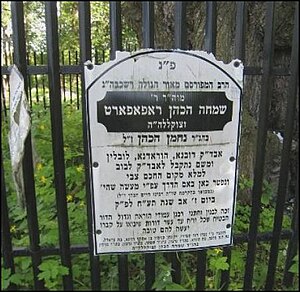Discover Your Roots
SIGN UPDiscover Your Roots
SIGN UPSimcha is a gender-neutral Hebrew name that means "Joy" and "Festivity". In Jewish philosophy, the concept of simcha holds great importance, with a teaching emphasizing the mitzvah of always being in a state of happiness. The name is also used to denote happy occasions such as weddings and bar mitzvahs. Simchat Torah, a holiday marking the completion and beginning of the annual cycle of reading the Torah, is another significant usage of the term. Additionally, Simcha is utilized as a given name for both men and women, with variations in its prevalence based on Jewish traditions. The name's associations with joy and celebration make it a meaningful choice for individuals seeking a name with a positive and festive connotation.

Rabbi Simcha Hagadol HaKohen Rappaport, born around 1650 in L'viv, Ukraine, was a prominent 17th-century Ukrainian rabbi and the progenitor of the Rappaport rabbinic dynasties. His father, Rabbi Nachman Lipshitz (Rappaport), held esteemed positions in various cities. Rabbi Rappaport, a direct descendant of Ezra HSofer and the MaHaRam through his mother, received his education in L'viv. In 1688, he became the Chief Rabbi of Horodna and was later appointed as the Av Bris Din of Levov. However, he passed away on August 4, 1718, in Szczebrzeszyn while on his way to Levov. The Soloveitchik dynasty regards Rabbi Rappaport as a notable ancestor and progenitor, with several prominent descendants including Chaim Soloveitchik, Joseph B. Soloveitchik, and Meir Kahane. Rabbi Rappaport's legacy continues to be celebrated within the Jewish rabbinic community.Note: The summary has been written within the specified word limit and includes relevant information from the original content.




All images displayed on this page are sourced from Wikipedia or Wikimedia Commons.We use these images under their respective Creative Commons or public domain licenses. Wherever applicable, author attributions and license information are provided. If you believe an image is used incorrectly or outside its license terms, please contact us so that we can review and correct the issue.